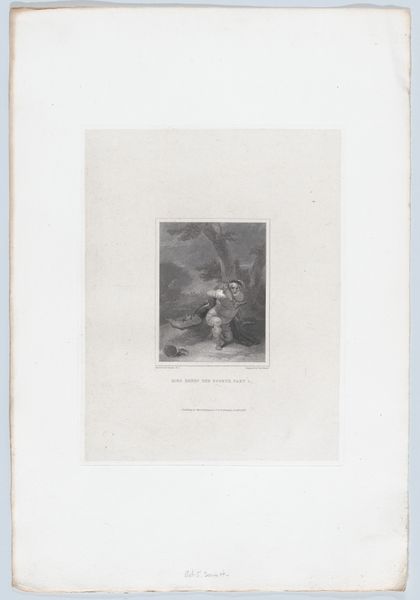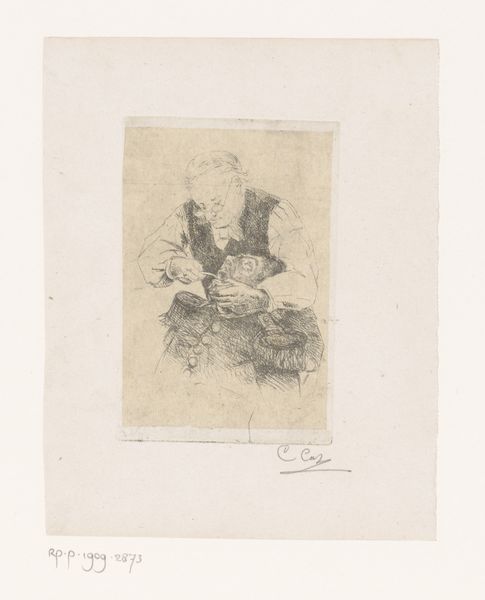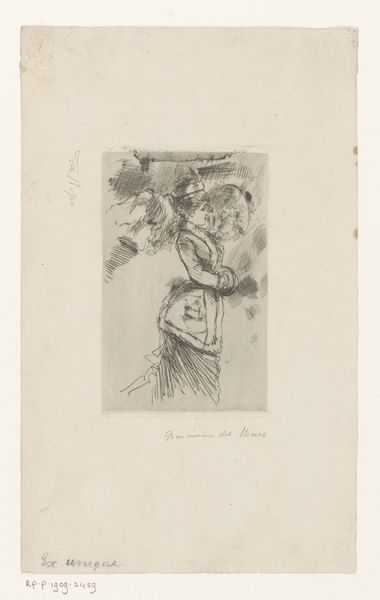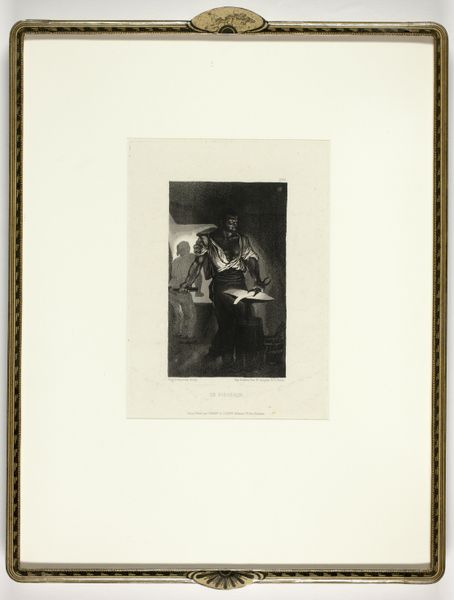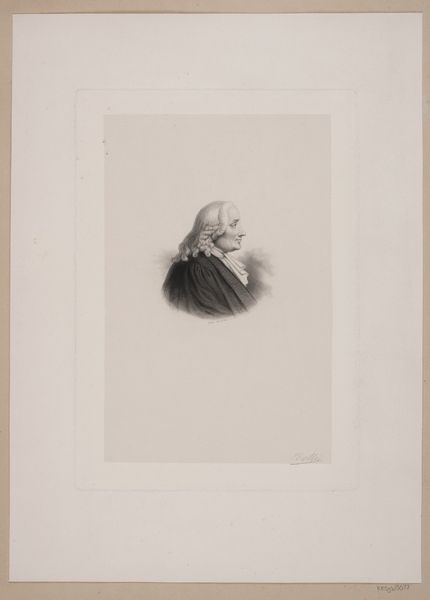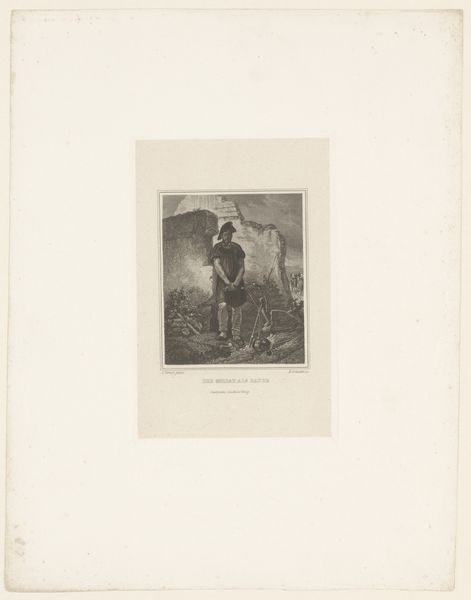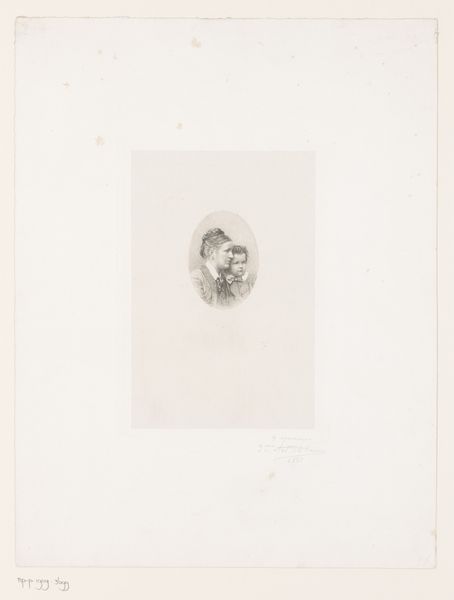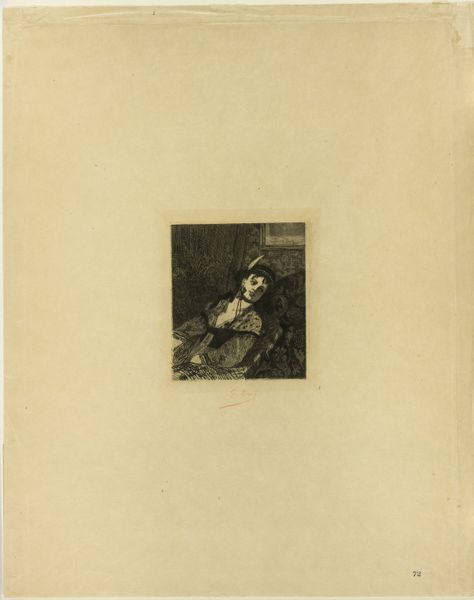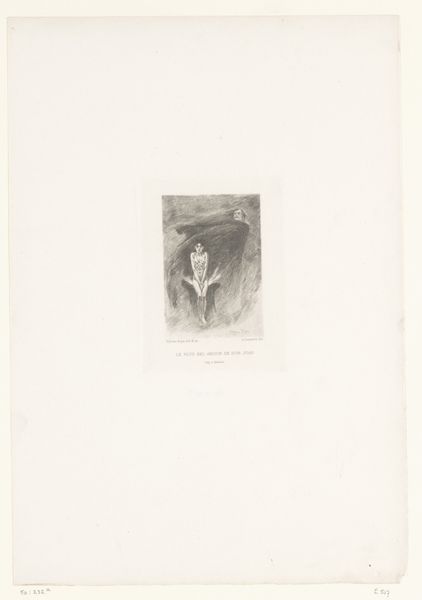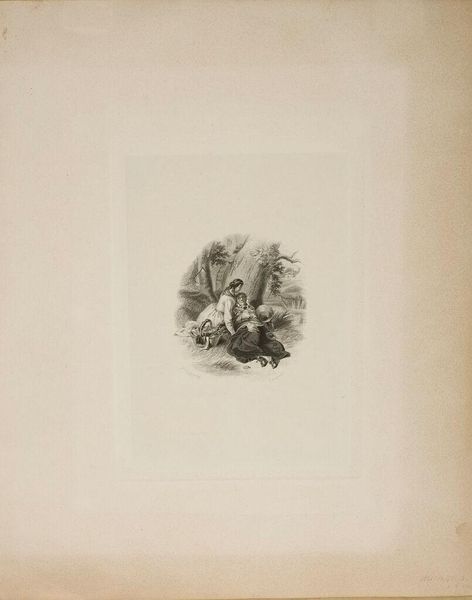
Dimensions: 249 mm (height) x 176 mm (width) (plademaal)
Curator: What an intriguing piece. This is "St. Helene," a print engraved by Joel Ballin sometime between 1822 and 1885, now housed at the SMK in Copenhagen. Editor: My immediate reaction is melancholy, almost Gothic. There's a striking contrast between the dark, shrouded figure in the foreground and the ethereal angel bathed in light behind it. The somber, rough landscape in front emphasizes that darkness. Curator: Yes, that stark visual contrast speaks to the themes it addresses. It presents Napoleon Bonaparte’s exile on Saint Helena, viewed through an allegorical lens, focusing on notions of isolation and imperial downfall. That dark, tormented figure represents Napoleon, perched on the desolate rock. The angel, holding what appears to be an urn of water, gestures toward him with pity. Editor: Interesting! Seeing Napoleon presented as both a historical and symbolical figure allows us to delve into complex themes like power and morality, particularly the consequences of ambition. Considering how profoundly colonial actions can effect the landscape itself, does St. Helena act as a personification of that place marked forever as a prison? Curator: Exactly! The artwork operates on multiple levels. It critiques imperial power while engaging in the Romantic fascination with solitary figures and sublime landscapes. The print’s visual rhetoric presents us with a debate concerning memory and representation. Who does Napoleon belong to? Is it to France and the rest of the Empire that held him so high or just a name known on a desolated landscape? Editor: Thinking about the artwork’s location in Denmark, within the Scandinavian socio-political framework, raises additional questions about national identity. As Napoleon shaped a European identity by threatening a European identity, I imagine it would be a subject worthy of examination and representation in art. Curator: I find myself particularly drawn to the print’s commentary on the fragile nature of historical memory. It speaks volumes about the ways dominant narratives get formed around individuals but also reminds us how these figures remain tethered to the specific location they affected the most. Editor: For me, seeing "St. Helene," has deepened my understanding of how historical events get intertwined with emotion, especially where art seeks to both remember and pass judgment on figures like Napoleon. The interplay between despair and grace is what lingers most for me.
Comments
No comments
Be the first to comment and join the conversation on the ultimate creative platform.
